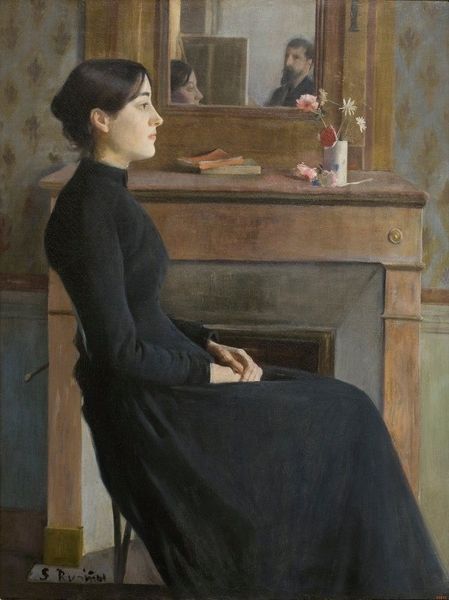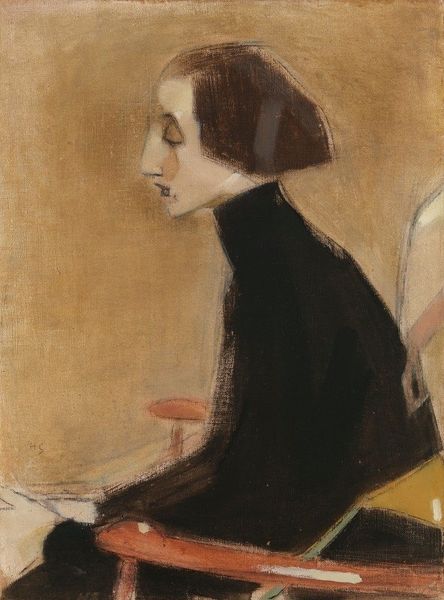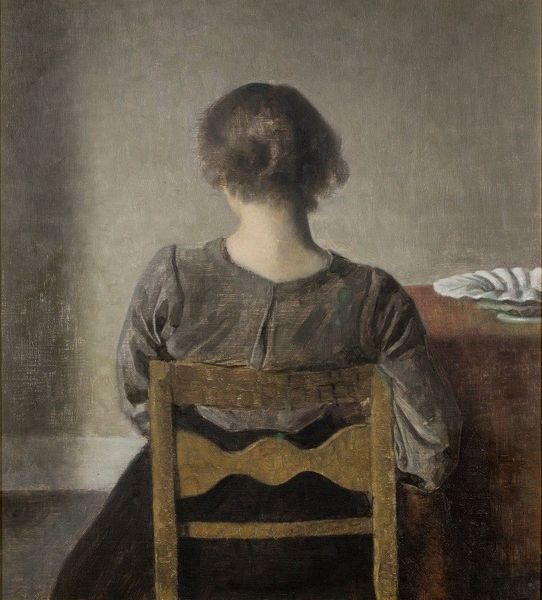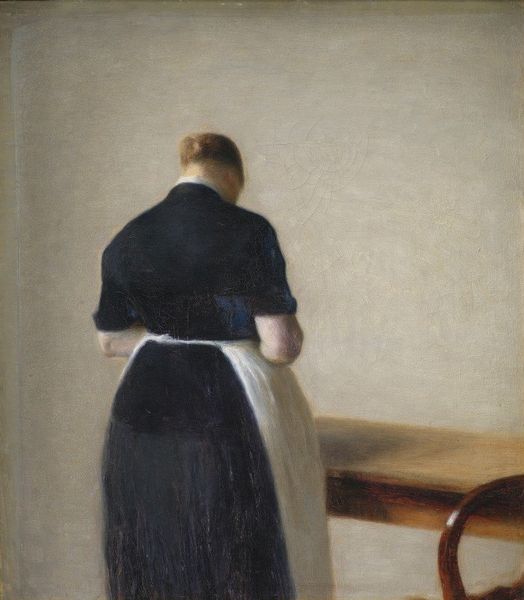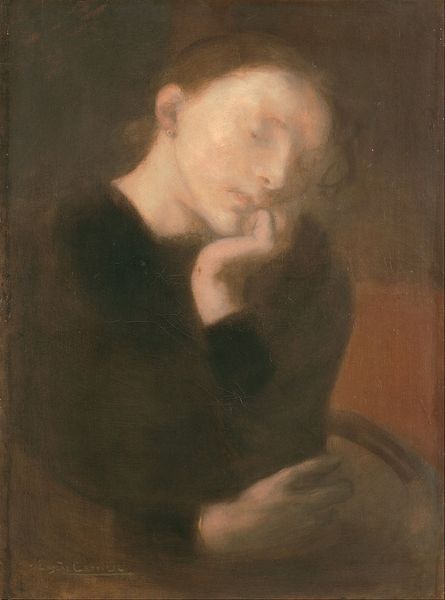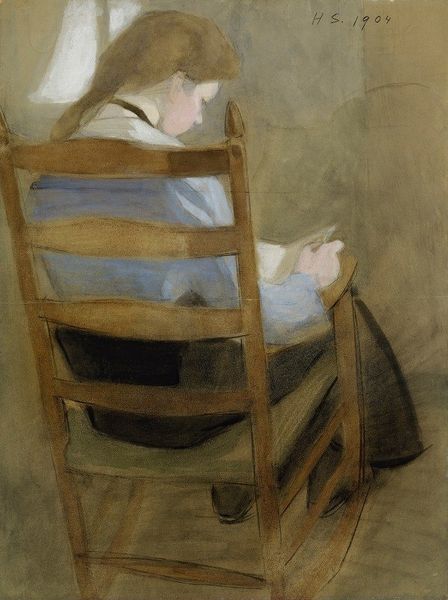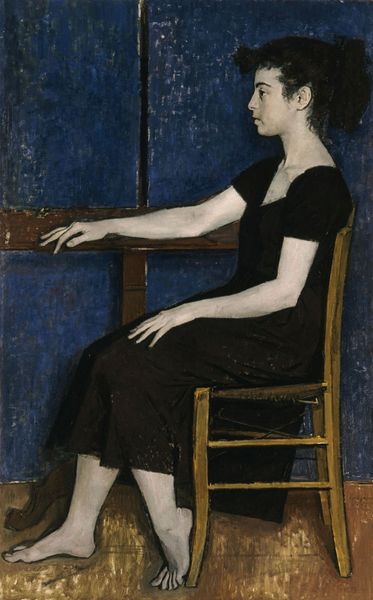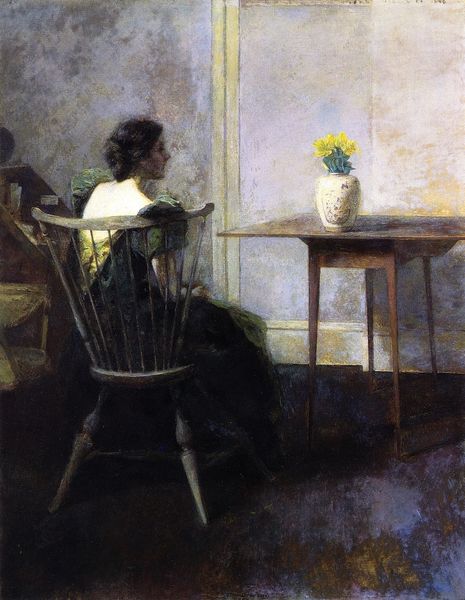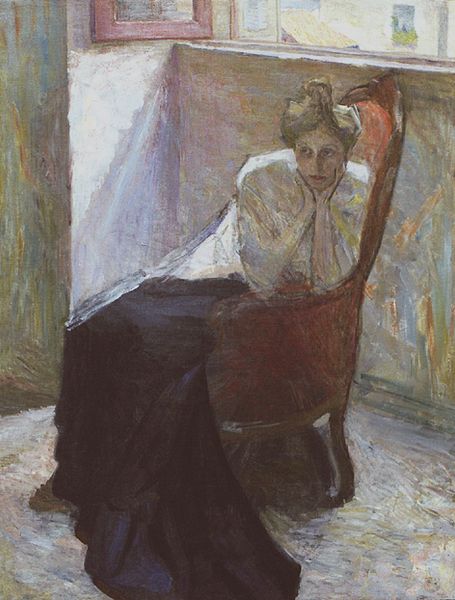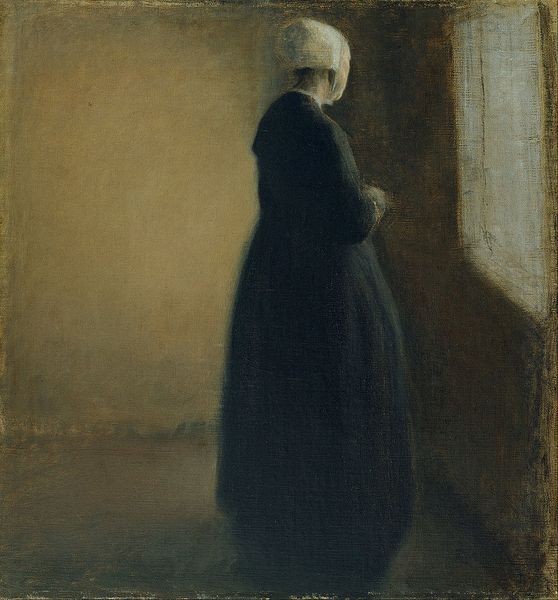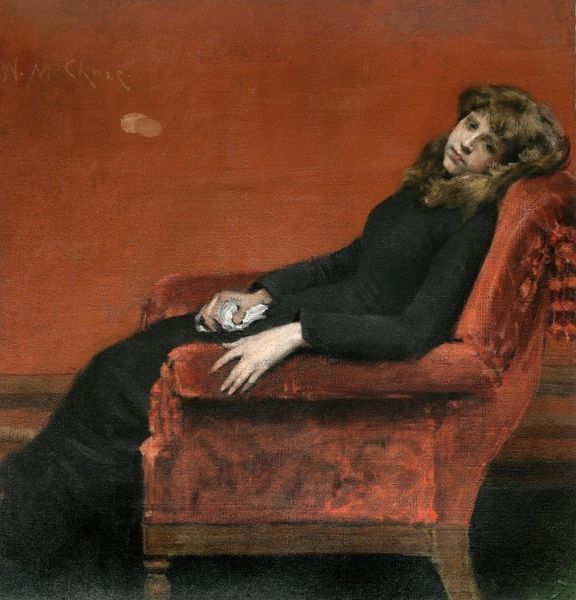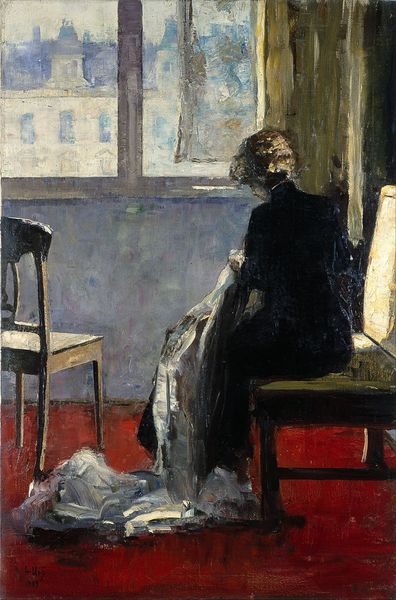
painting, oil-paint
#
portrait
#
figurative
#
character portrait
#
painting
#
oil-paint
#
portrait subject
#
figuration
#
portrait reference
#
portrait head and shoulder
#
intimism
#
symbolism
#
portrait drawing
#
facial portrait
#
portrait art
#
fine art portrait
#
realism
#
celebrity portrait
#
digital portrait
Copyright: Public Domain: Artvee
Editor: Helene Schjerfbeck's "The Seamstress," painted in 1905, portrays a woman in quiet contemplation. Oil on canvas, the piece is quite intimate, and the figure’s dark clothing and subdued palette create a somber, almost melancholic mood. How can we unpack the historical context embedded in this image? Curator: Considering the social landscape of the early 20th century is crucial here. Schjerfbeck painted this during a time when women’s roles were rapidly evolving, yet simultaneously constrained by societal expectations. This image could be interpreted as a commentary on the interior lives of women – particularly working-class women – who, despite societal changes, often found themselves confined to domestic spaces and labor. Does her posture suggest a resignation, or something else? Editor: I see a sense of quiet strength, maybe even resilience, despite the somber tone. Could the act of sewing itself be a symbol of something more than just domestic labor? Curator: Absolutely. Sewing was often seen as a form of creative expression and economic independence for women, albeit within certain limitations. Consider how institutions of art shaped which subjects and which artists were celebrated, or ignored, based on gender and social class. Schjerfbeck's focus on a "seamstress" elevates a subject typically excluded from high art, questioning those very institutional biases. Are we meant to see her as simply a seamstress, or is she also representative of a larger socio-political condition? Editor: That makes me think about the absence of specific details. Her features are soft, and the background is minimal, which could suggest she represents many women in similar situations. It makes the painting more universally relatable. Curator: Precisely. By stripping away the specific, Schjerfbeck opens up the interpretation to a broader social commentary. The very act of displaying this ‘ordinary’ woman in a gallery setting challenged the established norms of what was considered worthy of artistic representation. It reminds us that art can function as a powerful mirror, reflecting and challenging societal power structures. Editor: This conversation really illuminated the deeper, societal layers within what seemed like a simple portrait. Curator: Indeed. It’s a testament to how art engages with the cultural narratives of its time. It has enriched my appreciation for the artist’s subtle critique.
Comments
No comments
Be the first to comment and join the conversation on the ultimate creative platform.

